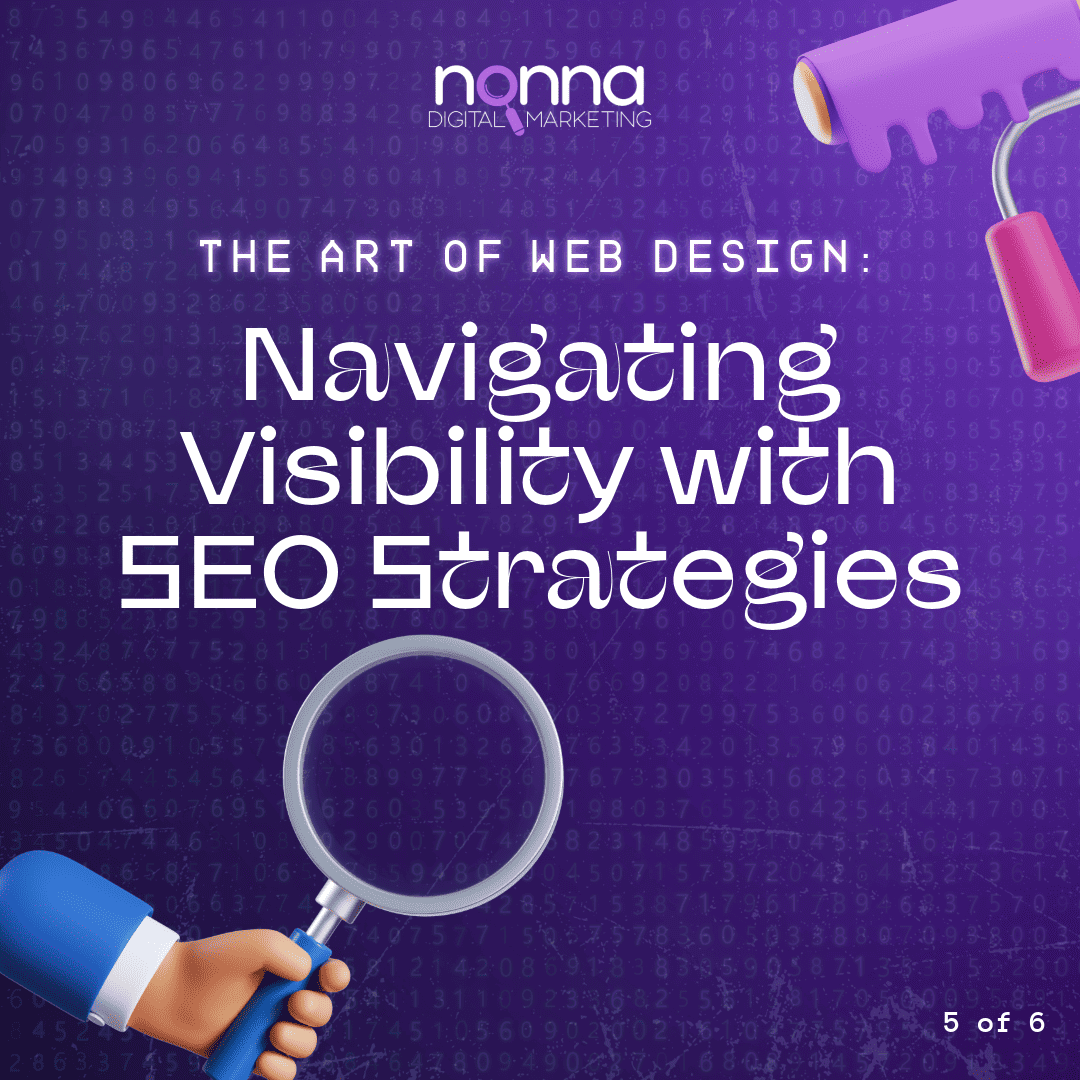In the vast landscape of the internet, where countless websites compete for attention, effective web design is essential for standing out from the crowd. But what good is a beautifully designed website if no one can find it? This is where the art of web design intersects with the science of SEO (Search Engine Optimization). By understanding and implementing SEO strategies, web designers can create websites that not only captivate users but also rank higher in search engine results. In this article, we will explore the symbiotic relationship between web design and SEO, uncovering the secrets to achieving visibility in the online world.
Understanding SEO in the Web Design Context
To truly unlock the potential of web design, one must first grasp the fundamentals of SEO. SEO involves a series of techniques and practices aimed at improving a website’s visibility in search engine rankings. By optimizing various elements on a website, such as its structure, content, and user experience, web designers can help search engines understand and index their sites more effectively. This in turn leads to higher organic traffic and better visibility for the website.
When it comes to web design, SEO plays a crucial role in ensuring that the website is not only visually appealing but also functional and accessible to both users and search engines. By incorporating SEO best practices right from the design stage, web designers can lay a solid foundation for a website’s success.
Optimizing Site Structure for SEO
One of the key aspects of web design that impacts SEO is site structure. A well-structured website not only enhances user experience but also helps search engines crawl and index the site more efficiently. When designing a website, it is important to create a logical hierarchy of pages and categories, making it easy for users and search engines to navigate through the site.
A clear and intuitive navigation menu is crucial for both user experience and SEO. By organizing the website’s content into logical sections and providing easy-to-use navigation menus, web designers can ensure that users can find what they are looking for quickly and easily. Additionally, search engines rely on clear site structures to understand the context and relevance of each page, which can positively impact the website’s search rankings.
Furthermore, web designers should also pay attention to the URL structure of the website. Including relevant keywords in the URLs can help search engines better understand the content of the page and improve its visibility in search results. It is also important to create descriptive and user-friendly URLs that are easy to read and remember.
Keyword Integration: Artful Placement and Density
Keywords are the foundation of SEO, and their strategic integration into web design can significantly impact a website’s visibility. When designing a website, web designers should conduct thorough keyword research to identify the most relevant and high-traffic keywords for their target audience.
Once the keywords have been identified, they should be strategically placed throughout the website’s content, including headings, titles, meta descriptions, and image alt tags. However, it is important to strike a balance between keyword integration and maintaining natural and engaging content. Keyword stuffing, or excessive use of keywords, can result in a poor user experience and potential penalties from search engines.
In addition to keyword placement, keyword density is another important factor to consider. Keyword density refers to the percentage of keywords compared to the total number of words on a page. While there is no fixed rule for keyword density, it is generally recommended to aim for a keyword density of around 1-2% to maintain a natural flow of content. It is important to remember that the primary goal is to create valuable and informative content for users, while also optimizing it for search engines.
Visual Elements and SEO: Beyond Aesthetics
Web design is not just about creating visually appealing websites; it also involves optimizing the visual elements for SEO. Images, videos, and other visual elements can enhance user engagement and make the website more visually appealing. However, these elements need to be optimized to ensure they contribute positively to SEO.
One important aspect of optimizing visual elements is the use of descriptive file names and alt tags. When naming image files, web designers should use descriptive and relevant keywords instead of generic names. Similarly, alt tags should accurately describe the content of the image, including relevant keywords where appropriate. This helps search engines understand the context and relevance of the visual elements, improving their visibility in search results.
Another important consideration is the size and loading speed of visual elements. Large file sizes can slow down the website’s loading speed, negatively impacting user experience and search engine rankings. Web designers should optimize images and videos by compressing them without compromising their quality. This not only improves the website’s performance but also signals to search engines that the website is well-optimized and user-friendly.
Responsive Design’s Impact on SEO
In today’s mobile-first world, responsive design has become a necessity for web designers. Responsive design ensures that websites adapt to different screen sizes and devices, providing an optimal viewing experience for users. But how does responsive design impact SEO?
First and foremost, responsive design is favored by search engines, particularly Google. Google has stated that responsive design is its recommended configuration for mobile-optimized websites. By implementing responsive design, web designers can ensure that their websites are mobile-friendly, which can positively impact search engine rankings.
Responsive design also eliminates the need for separate mobile and desktop versions of a website, consolidating the website’s authority and reducing the risk of duplicate content. Search engines prefer websites that provide a consistent experience across different devices, and responsive design achieves just that.
Furthermore, responsive design improves user experience, which indirectly impacts SEO. Websites that are easy to navigate and view on mobile devices tend to have lower bounce rates and higher engagement metrics, signaling to search engines that the website provides valuable content and a positive user experience.
SEO and Content Strategy: Crafting Compelling Narratives
Content is king in the world of SEO, and it is the responsibility of web designers to create a platform that showcases valuable and engaging content. A well-crafted content strategy can significantly impact a website’s visibility and success in search engine rankings.
When designing a website, web designers should consider the content format and structure. By incorporating different types of content, such as blog posts, videos, infographics, and podcasts, web designers can cater to different user preferences and increase the website’s overall visibility. It is important to create high-quality and informative content that aligns with the target audience’s interests and needs.
Additionally, web designers should also consider the layout and formatting of the content. Breaking up the content into shorter paragraphs, using headings and subheadings, and incorporating bullet points and numbered lists can make the content more scannable and user-friendly. This not only improves the user experience but also helps search engines understand the structure and relevance of the content.
Furthermore, web designers should pay attention to the integration of keywords within the content. By naturally incorporating relevant keywords throughout the content, web designers can improve the website’s visibility in search engine results. However, it is important to avoid keyword stuffing and focus on creating valuable and engaging content that resonates with users.
Internal Linking Strategies: Weaving a Seamless Web
Internal linking is a powerful SEO strategy that can improve a website’s visibility and user experience. By linking relevant pages and content within the website, web designers can guide users through the website and help search engines understand the relationships between different pages.
When designing a website, web designers should strategically incorporate internal links throughout the content. This not only helps users navigate through the website but also distributes the authority and relevance of the website’s pages. By linking to relevant and authoritative pages, web designers can signal to search engines that the website provides valuable and trustworthy content.
It is important to create descriptive anchor text for internal links, using relevant keywords where appropriate. This helps search engines understand the context and relevance of the linked pages, improving their visibility in search results. However, it is important to strike a balance and avoid excessive internal linking, as this can result in a poor user experience and potential penalties from search engines.
User Experience Signals and SEO Rankings
User experience is a critical factor in SEO, and web designers play a key role in creating websites that provide a positive user experience. Search engines consider various user experience signals, such as page load speed, mobile-friendliness, and bounce rate, when determining search rankings.
To optimize user experience, web designers should focus on creating fast-loading websites. Slow-loading websites not only frustrate users but also negatively impact search engine rankings. Web designers should optimize images and videos, minify CSS and JavaScript files, and leverage browser caching to improve the website’s loading speed.
Mobile-friendliness is another important aspect of user experience that impacts SEO. With the majority of internet users accessing websites through mobile devices, it is crucial for web designers to create websites that are responsive and adapt to different screen sizes. By implementing responsive design, web designers can ensure that their websites provide a seamless and user-friendly experience on all devices.
Additionally, web designers should aim to reduce the website’s bounce rate, which refers to the percentage of users who leave the website after viewing only one page. High bounce rates can indicate to search engines that the website does not provide valuable or relevant content. Web designers can reduce bounce rates by creating engaging and informative content, improving the website’s navigation and user interface, and optimizing the website’s loading speed.
Schema Markup: Painting Rich Snippets for SEO
Schema markup is a powerful SEO strategy that can enhance a website’s visibility in search engine results. Schema markup allows web designers to provide additional context and information about the website’s content to search engines, which can result in rich snippets being displayed in search results.
Rich snippets are enhanced search results that contain additional information, such as star ratings, reviews, and event details. By implementing schema markup, web designers can increase the chances of their websites appearing as rich snippets in search results, attracting more attention and clicks from users.
Web designers can use various schema markup types, such as organization schema, product schema, and article schema, depending on the nature of the website’s content. By accurately implementing schema markup, web designers can provide search engines with valuable information about the website’s content, improving its visibility and click-through rates.
Conclusion
In the ever-evolving world of web design and SEO, the art of creating visually stunning and user-friendly websites goes hand in hand with the science of optimizing for search engines. By understanding the principles and strategies of SEO, web designers can navigate the intricacies of visibility in the online world. From optimizing site structure and integrating keywords to crafting compelling content and enhancing user experience, each element of web design plays a crucial role in achieving SEO success. So, embrace the art of web design and let it harmonize with the symphony of SEO strategies to create websites that not only captivate users but also rank higher in search engine results.
Work with Nonna Digital Marketing
Are you ready to take your website’s visibility to the next level? Contact Nonna Digital Marketing today and let our team of experts help you navigate the complex world of web design and SEO. With our tailored strategies and industry-leading techniques, we can create a website that not only wows your audience but also dominates search engine rankings. Don’t let your website get lost in the vast expanse of the internet – work with Nonna Digital Marketing and be seen by the world.


